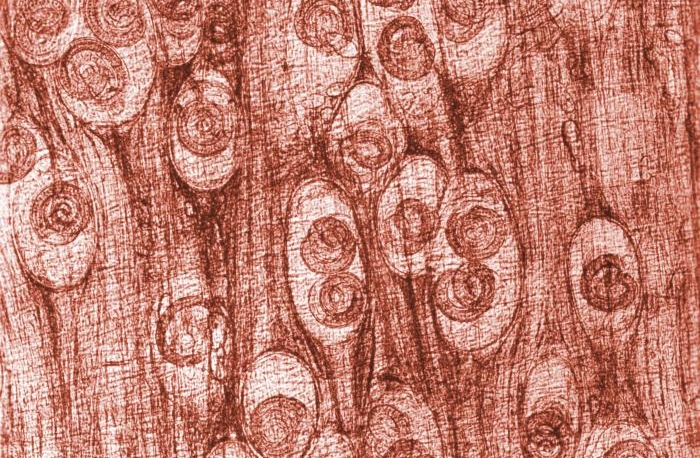Everything hurt. For the first time in my life, I could feel the tiny muscles behind my eyeballs. And they ached. It all ached.
I had dengue fever — a mosquito-borne disease that someone, somewhere, gave the nickname “breakbone fever,” and in that moment, I knew why. The virus was causing a deep pain to radiate from every bone in my body.
As a second year Peace Corps volunteer in Peru, I had been careful. I wore my bug spray. I sported long pants — even in the heat. But there was only so much I could do. Unlike some other diseases transmitted by mosquitoes like malaria or yellow fever, there was no prophylactic pill, no vaccine, to prevent dengue fever.
Current estimates put roughly 2.5 billion people — over 40 percent of the world’s population — at risk for the disease. What’s more, dengue is the fastest-spreading tropical disease in the world, thanks to its vectors: Aedes aegypti and Aedes albopictus mosquitoes. The Aedes mosquitoes are pros at adapting to a changing environment and they have one secret weapon up their sleeve: their eggs must be deposited near water but have the ability to dry out and only hatch once they encounter water again — even if it’s several months later. Ultimately, we could remove all adult and adolescent mosquitoes from a community, and the mosquito population would recover within two weeks, thanks to the survival mechanism of the Aedes eggs. This makes vector control very challenging, to say the least.
Up to this point, vector control has been the best bet in reducing dengue risk. There’s no cure nor is there any specific treatment for dengue fever: the most you can hope for once symptoms show is supportive care like rest, pain relievers, and fluids. That’s why prevention is so important, and why a vaccine could make such a huge difference.
But it won’t be easy.
Scientists have been working on developing a dengue vaccine for at least 60 years. Vaccine development is never a simple process; it requires years of basic lab research, cell and animal models, and extensive safety and efficacy testing before a vaccine is ready to be given to a single patient. In addition to all the usual challenges, there are a few specific to dengue.
Within the lab, there isn’t a great animal proxy for dengue infection. Animal testing is an important step in vaccine development because a vaccine candidate must prove safe and efficacious in animals before beginning trials in humans. Without a good animal model, researchers must test animals for virus in the blood instead of relying on clinical signs of infection. It’s also a challenge to test for dengue immunity. Scientists and doctors can check for the relevant antibodies in volunteer vaccine recipients, but they haven’t yet shown that the presence of antibodies translates into true protection.
Perhaps most important, while natural infection with one type of dengue virus triggers an immune response that appears to provide lifelong immunity against that specific serotype, it doesn’t protect against the other strains (there are five, and one strain was discovered just last year). What’s worse, protection against that one type could make subsequent infections from different types more severe, resulting in dengue hemorrhagic fever and dengue shock syndrome. Because of this, there is a lot of pressure to ensure a dengue vaccine provides protection against all serotypes.
Challenges notwithstanding, many major pharmaceutical companies are researching dengue vaccines. Merck and GlaxoSmithKline have vaccine candidates in various stages of trials. Sanofi Pasteur is the furthest along, currently awaiting results from Phase III trials. Despite somewhat disappointing results from Phase II trials, Sanofi is optimistic, with hopes to have vaccine on the shelves by late 2015.
That relief couldn’t come soon enough. As dengue-carrying mosquitoes (and subsequently dengue) spread to new areas, we’re seeing more and more explosive outbreaks. European countries like France and Croatia are seeing dengue for the first time ever, and the disease is even cropping up in parts of the United States.
With no good ways to treat or prevent dengue, a vaccine is the best hope we have for curbing the trends.
And think of the potential impact. With an effective vaccine, we could prevent as many as two million deaths every year.
Two million. That’s the population of Houston, Texas. Or the entire country of Botswana. And it’s more than double the number of deaths each year from malaria.
Vaccinerds that we are, we’re holding out hope this happens sooner rather than later. But until then, we should focus on what we can do: things like vector control, bug spray and covering clothing.
Every April 7, World Health Day, the World Health Organization highlights a global health problem. This World Health Day, we hope you join us in shedding light on vector-borne diseases and help spread the word about dengue fever. If you’re interested in finding out where dengue is found around the world, check out the DengueMap.
—
Jane manages the Vaccine Finder project at Health Map, the host site of the Disease Daily. Robyn is a contributing writer for the Disease Daily and works as a health educator for a non-profit focused on vaccine education. Both are fully up-to-date on their immunizations.

